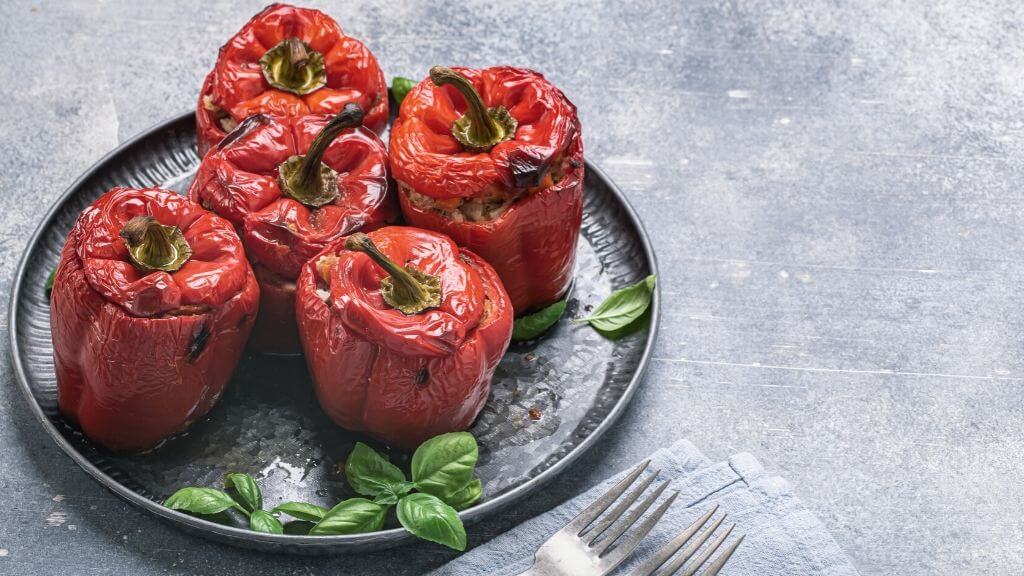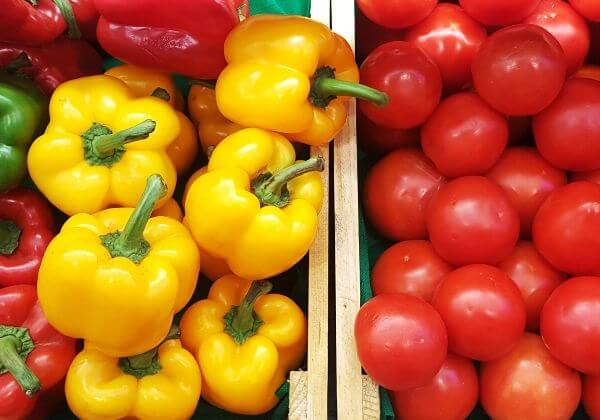Fruits and vegetables are both ideal foods for promoting health and preventing disease. The tomato is no different. The fruit that is commonly mistaken as a vegetable is actually pretty easy to understand.
Tomatoes are beneficial food for your eyes and overall health. Key plant compounds boost your health while you enjoy delicious meals. Diets rich in fresh fruits and vegetables are linked to better health, and tomatoes are a great place to start.
Seeing Red Should Make You Smile
The color red signals anger, but not when it comes to tomatoes and bell peppers. In these cases, red is good. When you see the red color of these vegetables, you can be assured that your eyes are in for a treat.
More than a visual treat, these vegetables contain beneficial phytochemicals and vitamins that boost eye health. The redder you see, the better you will actually see.
Tomatoes
The key compounds in tomatoes that boost eye health include lutein, beta-carotene, chlorogenic acid, and lycopene.
Lutein
Lutein is carotenoid and antioxidant. While it helps overall health, it is especially significant in protecting the eyes. Lutein naturally accumulates in the macula, which is the part of the retina at the back of the eye.
By protecting the macula from oxidative damage and harmful lights, lutein is a natural way to prevent macular degeneration. Macular degeneration is not treatable, so prevention is your best asset.
Beta-carotene
Beta-carotene is another carotenoid that your body converts into vitamin A. This anti-inflammatory compound protects the eyes and keeps the cornea moist.
Your cornea is the transparent covering of your eye. Any damage reduces clarity and causes dryness to the surface of the eye. Without treatment, this can cause inflammation, irritation, and impaired vision.
Chlorogenic Acid
Chlorogenic acid indirectly benefits your eyes. This compound promotes healthy blood pressure. High blood pressure in the body affects the eyes too.
High pressure in the eye causes damage to the optic nerve, which relays messages to the brain. This condition is called glaucoma, and without treatment, vision loss can result.
Lycopene
Lycopene is probably the most abundant compound in tomatoes. It is responsible for giving the vegetables their red coloring and is a powerful antioxidant. The redder the tomato, the more lycopene is present.
Lycopene works in the same way as other carotenoids in that it protects the eye from damage. Specifically, lycopene protects the inner eye from damaging light, such as blue light emitted from screens.

Bell Peppers
It is important to note that although red peppers are the focus here, green bell peppers provide the same beneficial compounds. Eating bell peppers will make sure you get the following eye-healthy compounds.
Vitamin C
Vitamin C is required for the production of collagen. Collagen is a structural component of the cornea. Without this protein, the eye is weak and vulnerable to damage and disease.
Vitamin C also prevents the development of cataracts by protecting the lens from oxidative damage. Studies have linked a high intake of vitamin C to reduced cataracts and reduced risk of macular degeneration.
Vitamin A
Vitamin A is essential for maintaining clarity in the cornea. Without this, the risk for cloudy vision and cataracts is increased. Studies also found vitamin A to be linked to a reduced risk of macular degeneration.
Additionally, vitamin A is a component of a protein called rhodopsin. This protein helps you see in low-light conditions. Vitamin A deficiency can result in a disease known as xerophthalmia. This disease starts with night blindness, but as the cornea softens with time, irreversible blindness can develop.
Iron
Iron is a mineral not typically associated with the eyes. It is mostly linked to blood and circulatory health. The link between iron and eye health is through the prevention of anemia.
Anemia is the result of low iron in the blood, and this can cause anemic retinopathy. This causes retinal hemorrhaging and increased pressure in the eye. The risk of visual impairment increases. By preventing anemia, this complication can also be prevented.

Tomato Stuffed Bell Pepper
Ingredients:
2 large red bell peppers
2 cups petite cherry or grape tomatoes (3-4 medium tomatoes, 1/2-inch diced)
2 cloves garlic, thinly sliced
1/4 cup chopped Kalamata olives (about 15)
3 oz feta cheese, crumbled
1/4 cup chopped basil
2 tablespoons olive oil
salt and pepper
Directions:
Preheat the oven to 400 degrees. Lightly spray a shallow baking dish with cooking spray.
Cut the bell peppers in half lengthwise, removing the seeds and ribs and leaving the stem. Place the peppers cut side up in the baking dish.
In a medium bowl, combine the tomatoes, garlic, olives, cheese, basil, and olive oil, and season with a bit of salt and pepper. Gently mix. Fill each pepper half with the mixture, dividing it evenly among the peppers. Cover the dish loosely with foil. Bake for about 30 minutes.
Remove the foil, and continue baking for about 15 minutes more. The cheese will have begun to turn light brown and the peppers will be tender. These can be served hot or at room temperature.
The tomatoes and bell peppers may get all the attention in this recipe, but there is another beneficial ingredient. Garlic may be small, but it plays a big role in eye health. Beyond flavor, garlic is full of sulfur.
Sulfur is important in the production of glutathione, an essential protein. Glutathione acts as an antioxidant to protect the eye lens from free radical damage. In doing so, the risk of cataracts is significantly reduced.
The Bottom Line
Vision is one of the most important human senses. As with other parts of the body, the eyes can weaken with age. The constant exposure to harmful lights and the environment put the eyes at risk every day.
It is important to protect your eyes, and what you eat is the easiest way to do this. Keep an eye on your vision, and fill your diet with foods full of eye-healthy nutrients like tomatoes.






